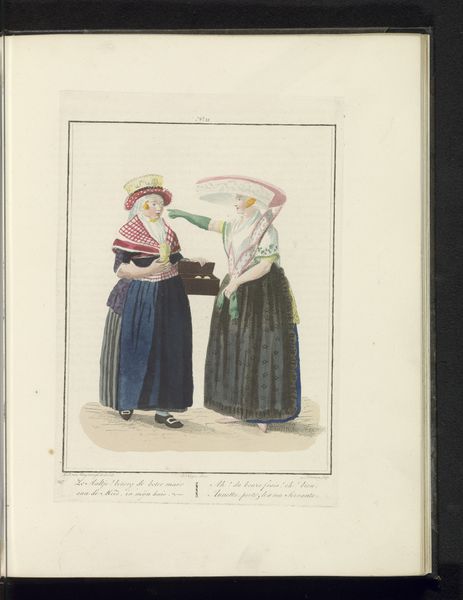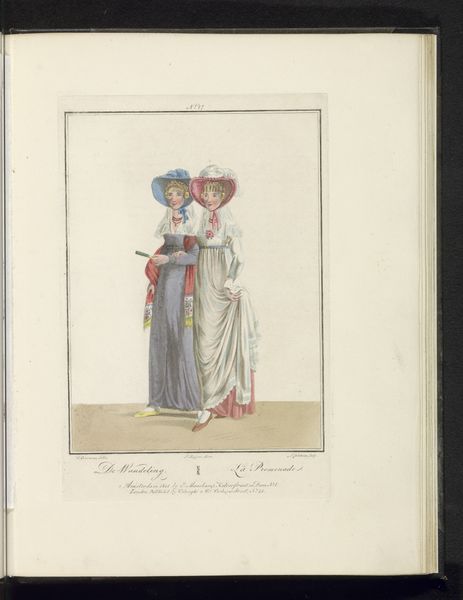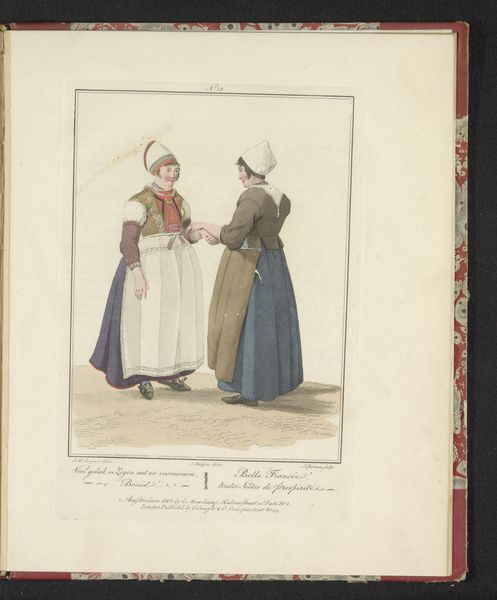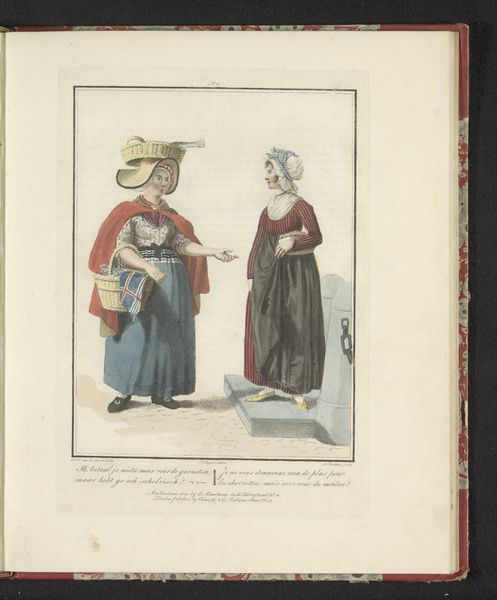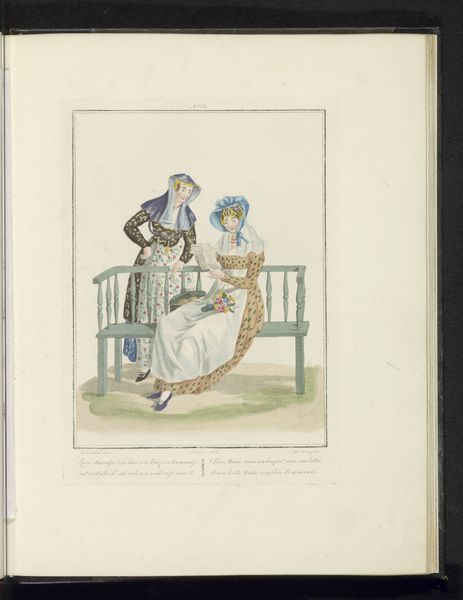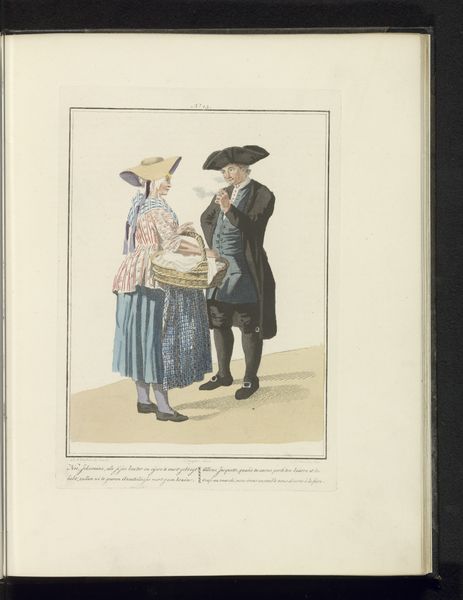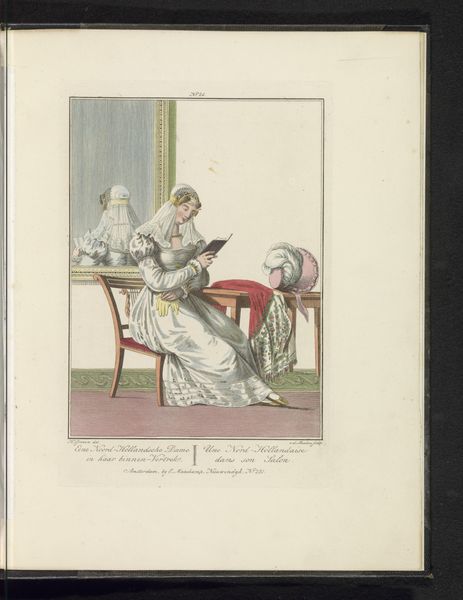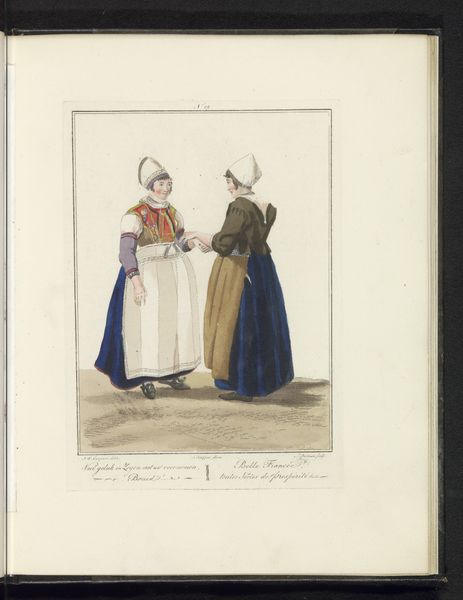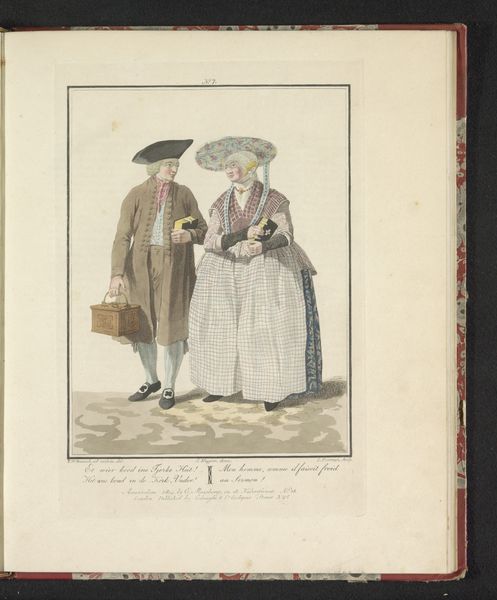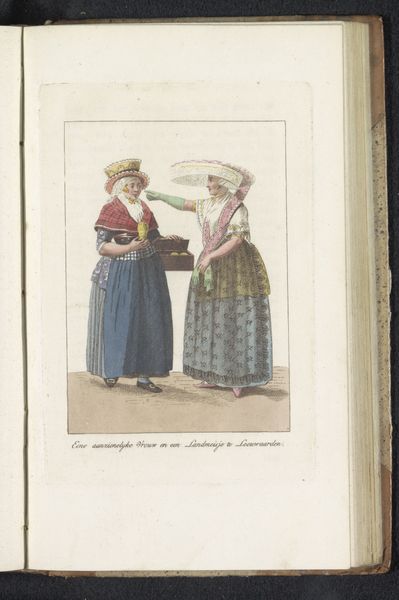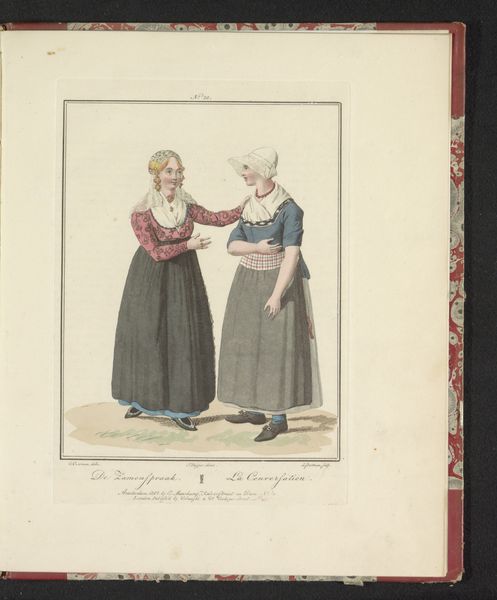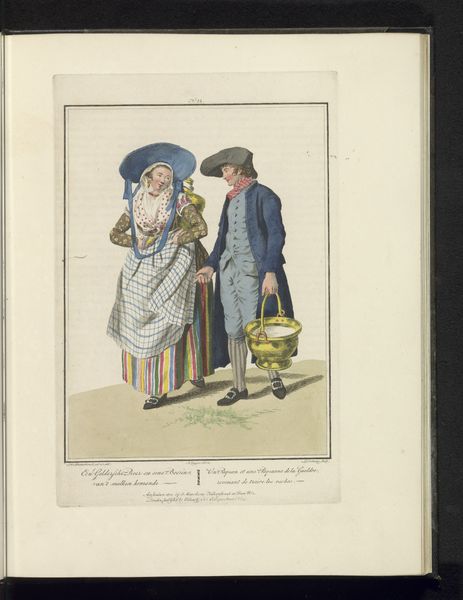
drawing, paper, watercolor
#
portrait
#
drawing
#
paper
#
watercolor
#
romanticism
#
costume
#
watercolour illustration
#
genre-painting
Dimensions: height 217 mm, width 154 mm
Copyright: Rijks Museum: Open Domain
Editor: So, this is “Een Fries en een Gronings Meisje” – “A Frisian and a Groningen Girl” – a watercolor and ink drawing on paper made between 1823 and 1829 by Willem van Senus. It looks like a pretty straightforward depiction of regional fashion, but I can’t help feeling like there’s something more here. How do you interpret this work? Curator: Well, let’s consider this piece beyond just "pretty." What do you notice about the way these women are presented, and how does that connect to broader societal attitudes of the time? Think about regional identities – were they celebrated or suppressed during this period? Editor: That’s a great point! The emphasis on distinct regional costumes makes me think about how identity was constructed and maintained, but also potentially commodified, right? These images might have been circulated to reinforce ideas about regional differences. Curator: Precisely! And what role did gender play in defining those regional identities? How are these women performing their identities, and for whom? The way they are dressed can reflect and reinforce prevailing norms and stereotypes regarding women's roles and regional affiliation. Editor: I see what you mean. Their clothing and pose almost create an idealized, maybe even romanticized version of regional womanhood? It feels less like genuine representation and more like a…constructed image? Curator: Exactly! Consider the Romanticism movement during this time. How did it influence the representation of cultures, especially minority cultures within the nation-state? How does this artwork engage with or challenge existing stereotypes? Editor: This is really thought-provoking. I had just seen it as a nice drawing but I see how it’s part of something much bigger than itself. Curator: Indeed. Examining the intersections of gender, regionality, and cultural representation reveals power dynamics and societal expectations embedded in this artwork. I wonder what it all means today? Editor: Thanks for making me think critically about the underlying politics in art; that definitely wasn't what I expected to find here.
Comments
No comments
Be the first to comment and join the conversation on the ultimate creative platform.
